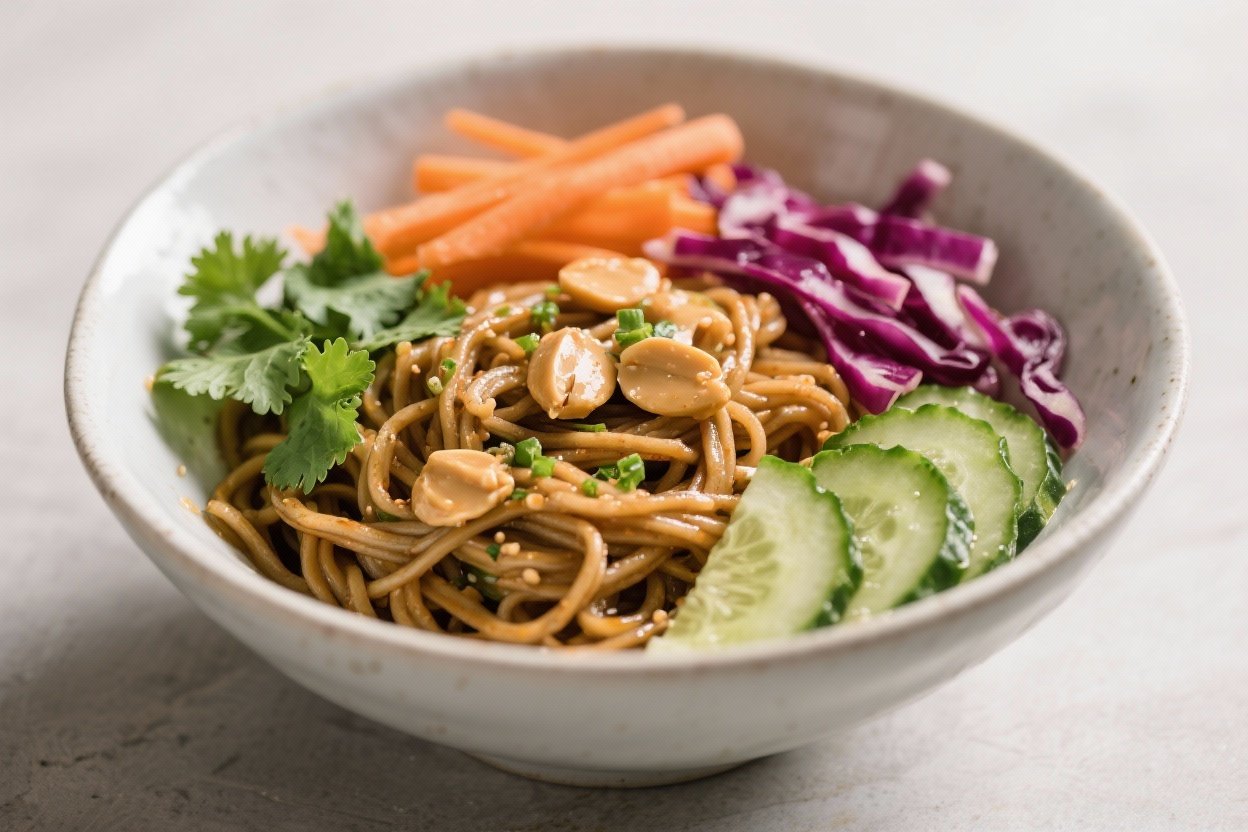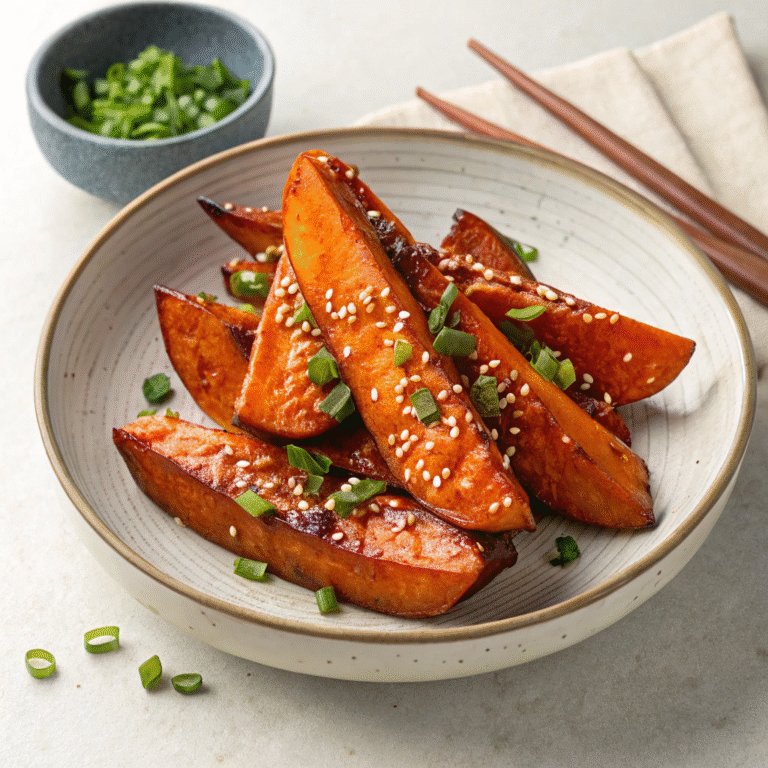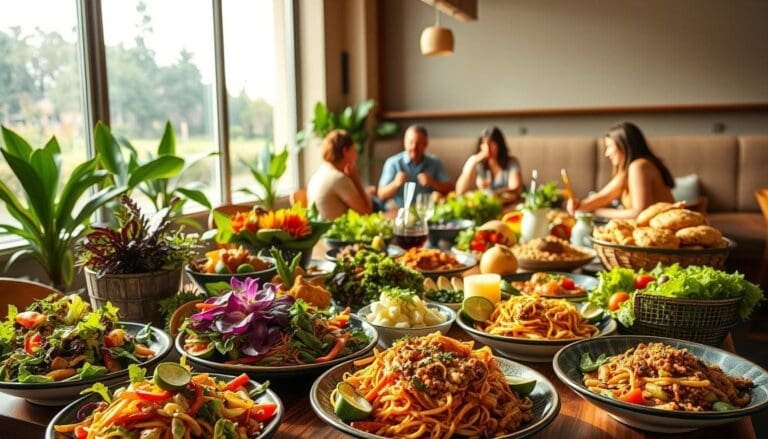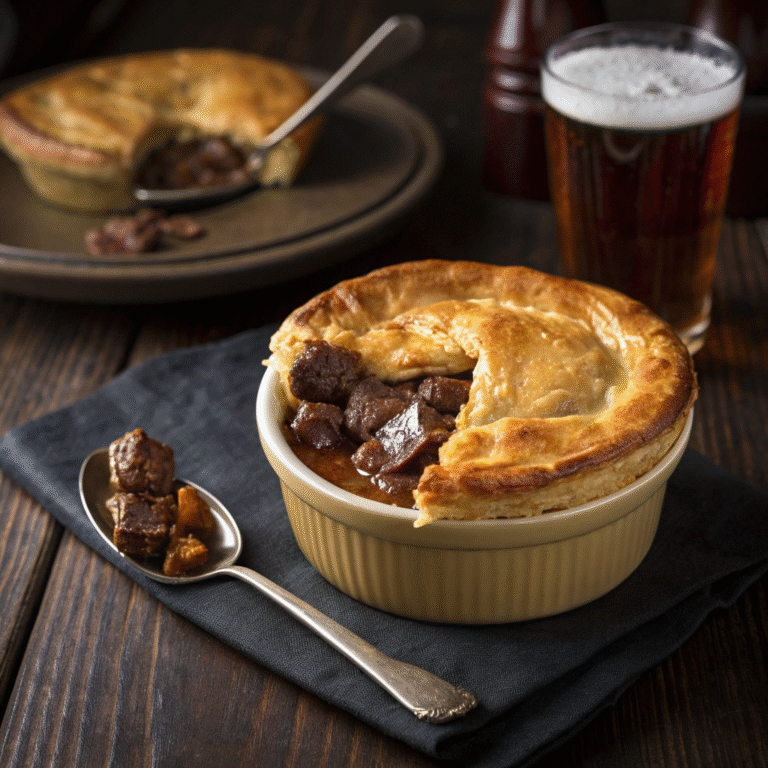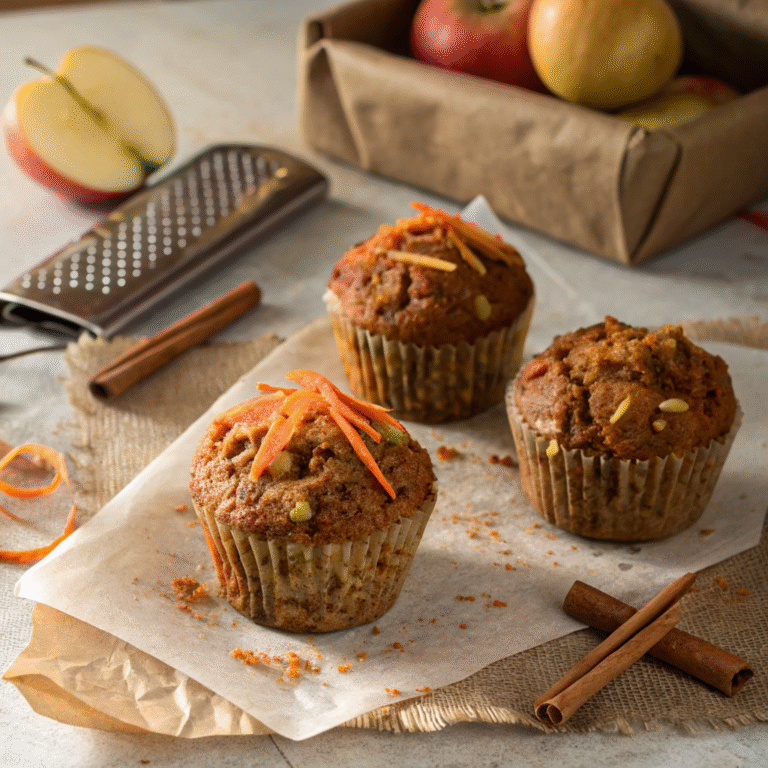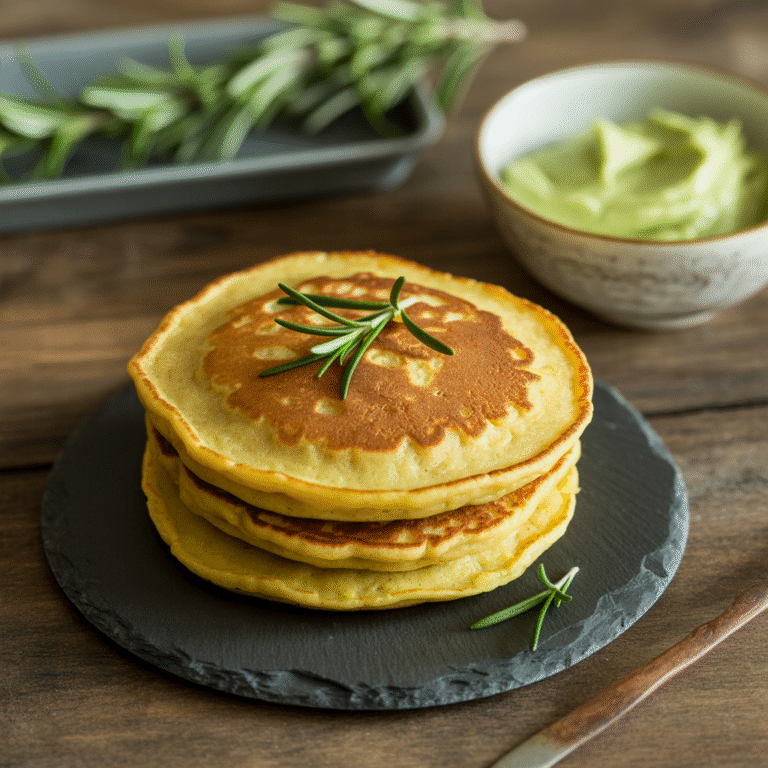Peanut Soba Noodle Bowl with Cucumber, Carrot, Red Cabbage, Cilantro: The 15-Minute Flavor Bomb You’ll Crave All Week
This bowl is what happens when weeknight speed meets restaurant-level swagger. It’s crunchy, creamy, slurpy, and somehow still feels like you made a smart life choice. No oven drama, no fussy techniques—just real-deal flavor that hits like a reward.
If you can boil water and stir peanut butter, you can nail this. And yes, it tastes even better than it looks on your feed.
What Makes This Recipe Awesome
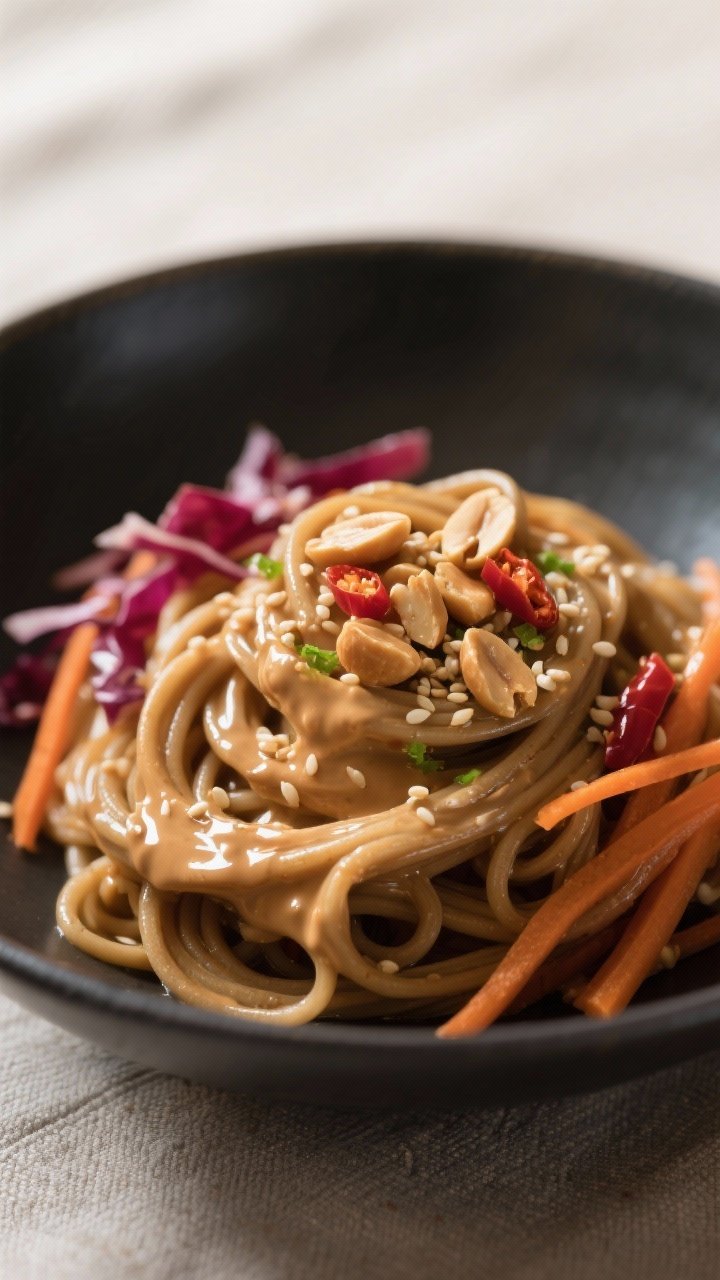
- Fast but not boring: You’ll prep and plate in about 15–20 minutes, tops. Efficient, delicious, repeatable.
- Balanced flavors: Savory peanut sauce, bright lime, a whisper of heat, and fresh herbs.
It’s a greatest-hits album in one bowl.
- Texture game on lock: Chewy soba, crisp cucumber and cabbage, snappy carrots. Every bite matters.
- Meal-prep friendly: Sauce keeps like a champ. Noodles and veg hold up for quick lunches.
- Flexible and inclusive: Vegan by default, easy to add protein, gluten-free friendly with swaps.
No one gets left out.
Ingredients Breakdown
- 100% buckwheat soba noodles (8 ounces): Chewy, nutty, and more interesting than plain pasta. If using wheat-blend soba, still great.
- English cucumber (1, julienned or thinly sliced): Hydrating crunch and freshness.
- Carrots (2 medium, peeled into ribbons or matchsticks): Sweetness and snap.
- Red cabbage (2 cups, thinly shredded): Color pop, fiber, and structure.
- Fresh cilantro (1 cup, roughly chopped): Herbal lift that brightens the whole bowl.
- Roasted peanuts (1/3 cup, chopped): Optional but highly recommended for crunch.
- Sesame seeds (1 tablespoon): Nutty accent; black or white both work.
Peanut Sauce:
- Creamy peanut butter (1/3 cup): The backbone—choose smooth for velvety texture.
- Soy sauce or tamari (3 tablespoons): Umami and salt. Use tamari for gluten-free.
- Rice vinegar (1.5 tablespoons): Clean acidity to balance richness.
- Lime juice (1 tablespoon, plus extra wedges): Bright, citrusy finish.
- Maple syrup or honey (1–2 teaspoons): Sweetness to round the edges.
- Toasted sesame oil (1 teaspoon): Tiny amount, big aroma.
- Garlic (1 clove, finely grated): Sharpness and savory depth.
- Fresh ginger (1 teaspoon, finely grated): Warm, zesty kick.
- Sriracha or chili crisp (1–2 teaspoons, to taste): Heat level = your call.
- Warm water (2–4 tablespoons): To thin to pourable consistency.
Optional protein add-ins: Baked tofu, shredded rotisserie chicken, grilled shrimp, or edamame.
Step-by-Step Instructions
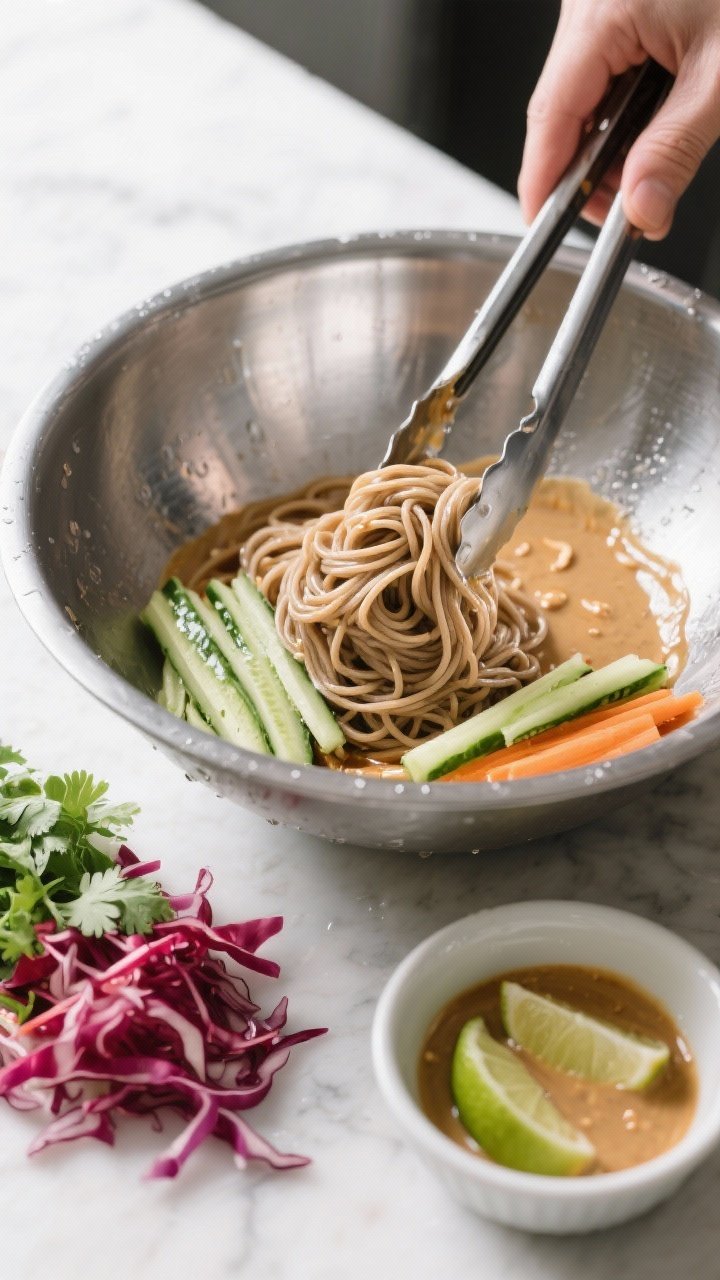
- Cook the soba: Bring a large pot of water to a boil.
Add soba and cook per package directions (usually 4–6 minutes). Stir occasionally to prevent clumping.
- Rinse and chill: Drain noodles, then immediately rinse under cold water until cool. This stops cooking and removes excess starch.
Drain well. Toss with a drizzle of sesame oil if you’re prone to sticky noodle disasters.
- Prep the veg: While noodles cook, slice cucumber, ribbon or julienne carrots, and shred red cabbage. Roughly chop cilantro.
Chop peanuts.
- Make the sauce: In a bowl, whisk peanut butter, soy/tamari, rice vinegar, lime juice, maple/honey, sesame oil, garlic, ginger, and sriracha. Add warm water a tablespoon at a time until smooth and pourable (think runny yogurt).
- Taste test: Adjust seasoning. More lime for brightness, soy for salt, maple for balance, or sriracha for heat.
You’re the boss.
- Assemble: In a large mixing bowl, combine cooled soba with half the sauce and toss to coat. Add cucumber, carrot, and cabbage. Fold gently.
Add more sauce until everything is lightly coated but not drowning.
- Top it off: Sprinkle cilantro, peanuts, and sesame seeds. Add protein if using. Serve with lime wedges and an extra drizzle of sauce if you saved some (smart move).
- Final check: If it tastes flat, it wants acid (lime) or salt (soy).
If it’s heavy, add more fresh veg. If it’s bland, your peanut butter was probably unsalted—compensate with a splash of soy.
Storage Instructions
- Short-term: Store dressed noodles and veggies in an airtight container for up to 2 days. The veggies soften slightly but stay pleasant.
- Best practice: Keep sauce separate and toss right before eating if you want max crunch.
Noodles + veg in one container, sauce in another.
- Protein storage: Store proteins separately to avoid sogginess, especially tofu and shrimp.
- Refreshing leftovers: Add a splash of hot water and a squeeze of lime to loosen the sauce. A pinch of salt or soy brings it back to life.
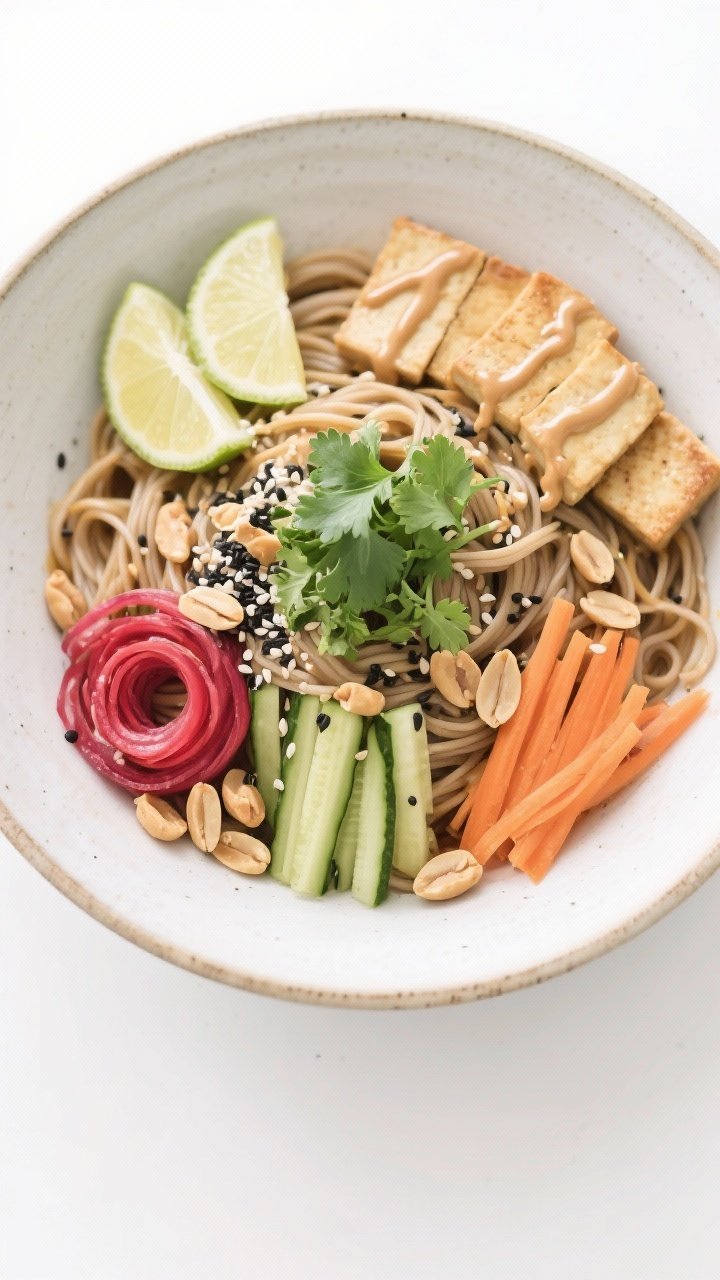
What’s Great About This
- Nutrition with satisfaction: Fiber-packed veg, plant protein from peanuts, and slow-burning carbs from soba.
- All-weather vibes: Cool and crisp for summer, but bold enough for cozy nights.
- Scales like a champ: Double it for a party, halve it for a solo power lunch.
- Low-mess, low-stress: One pot for noodles, one bowl for sauce, a cutting board. That’s it.
Don’t Make These Errors
- Overcooking soba: It turns mushy fast.
Set a timer and rinse ASAP. This isn’t spaghetti night.
- Skipping the rinse: Soba is starchy. If you don’t rinse, you get glue.
Not the vibe.
- Too thick sauce: Peanut butter varies. Thin with warm water until it coats a spoon and drips smoothly.
- Undersalting: If you used unsalted peanut butter, you’ll need more soy/tamari. Taste and correct.
- Overdressing early: If meal-prepping, keep the sauce separate or use just half and add more when serving.
Recipe Variations
- Spicy Thai-ish: Add a teaspoon of red curry paste to the sauce and garnish with Thai basil and lime zest.
- Miso magic: Whisk in 1 tablespoon white miso for deeper umami and a touch of savoriness.
- Sesame-forward: Swap half the peanut butter for tahini and add extra sesame seeds.
Nutty and sleek.
- Protein power: Top with crispy tofu, grilled chicken, or chilled poached shrimp. Edamame works great for a quick boost.
- Crunch upgrade: Add thinly sliced snap peas, radishes, or bell pepper. More colors, more party.
- Gluten-free path: Use 100% buckwheat soba and tamari.
FYI, some soba blends contain wheat—read labels.
- Low-heat version: Skip chili and throw in extra lime and ginger for a bright, tingly finish.
FAQ
Can I use another noodle besides soba?
Yes. Rice noodles, whole wheat spaghetti, or even ramen work. Soba brings a nutty flavor that plays perfectly with peanuts, but the sauce is flexible.
Is this meal-prep friendly?
Absolutely.
Prep the sauce and veggies ahead. Toss with noodles right before eating for peak texture. If you must pre-mix, reserve a little sauce to refresh later.
What if I’m allergic to peanuts?
Use almond butter, cashew butter, or tahini.
Increase soy/tamari slightly and tweak sweetness to balance. Add a pinch of toasted sesame seeds for extra depth.
How do I keep the noodles from sticking?
Rinse thoroughly with cold water and drain well. Toss with a teaspoon of sesame oil.
If they clump later, loosen with a splash of warm water and a bit more sauce.
Can I serve it warm?
Yes. Toss freshly cooked (briefly cooled) soba with warm sauce and the veggies. It’s great slightly warm or chilled—your call, IMO.
What proteins pair best?
Crispy tofu, poached or grilled shrimp, rotisserie chicken, or edamame.
Keep seasoning simple so the sauce remains the star.
Wrapping Up
This Peanut Soba Noodle Bowl with cucumber, carrot, red cabbage, and cilantro is the kind of recipe that respects your time and your taste buds. It’s fast to make, wildly customizable, and tastes like you planned more than you did—because you’re efficient, not boring. Keep the sauce on standby, stash some chopped veg, and you’ve got instant lunch insurance all week.
Now go claim your new weeknight flex.

